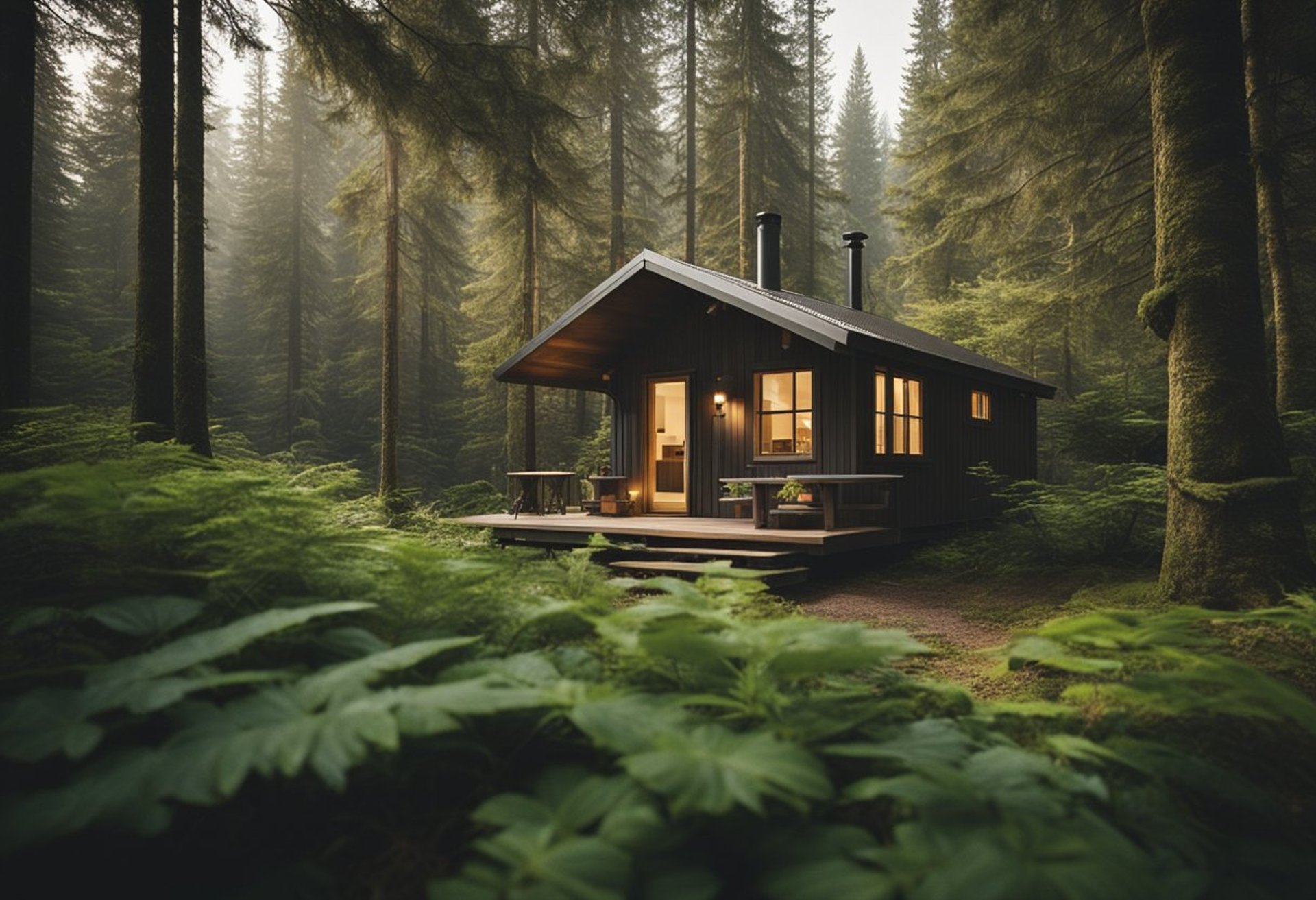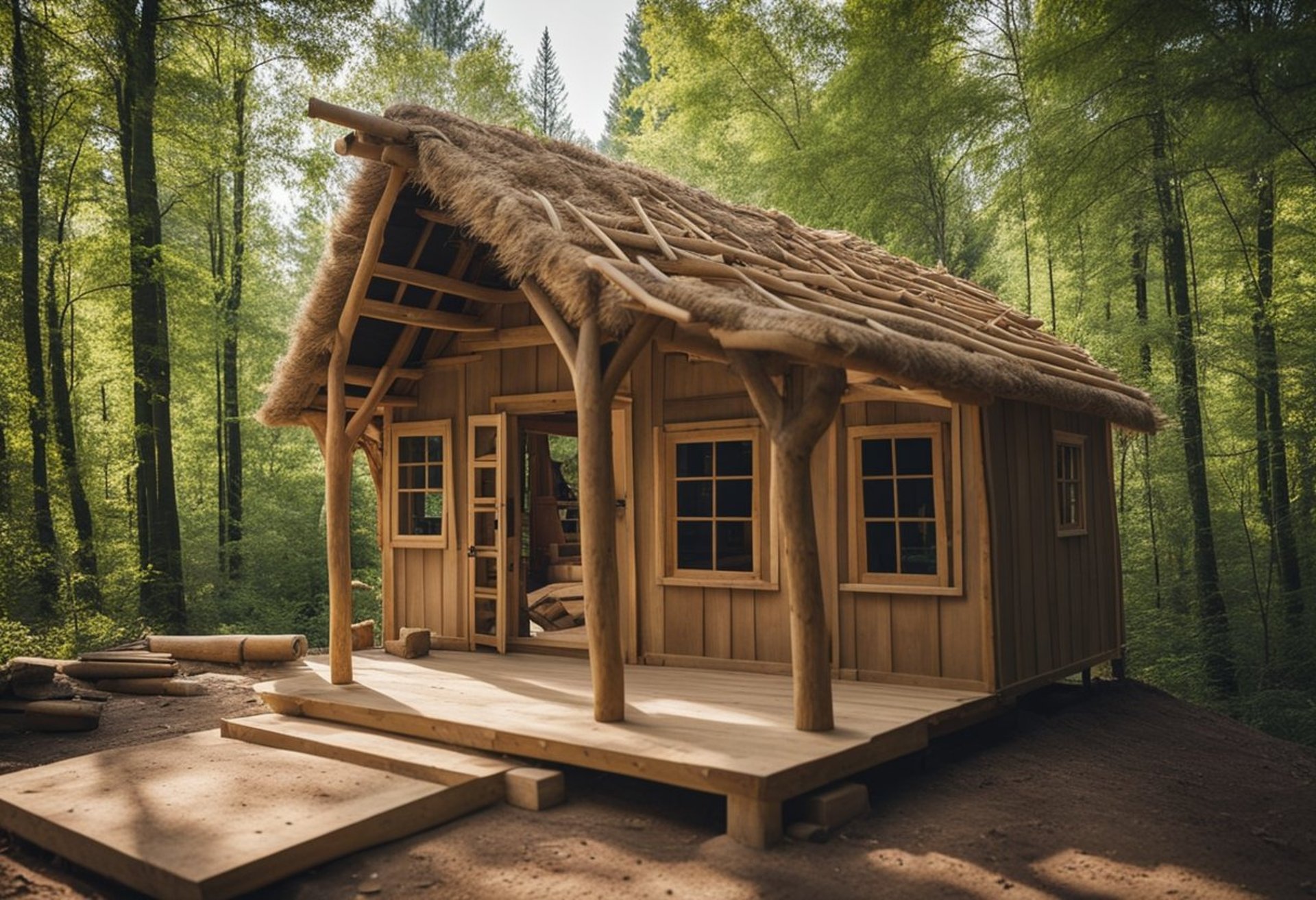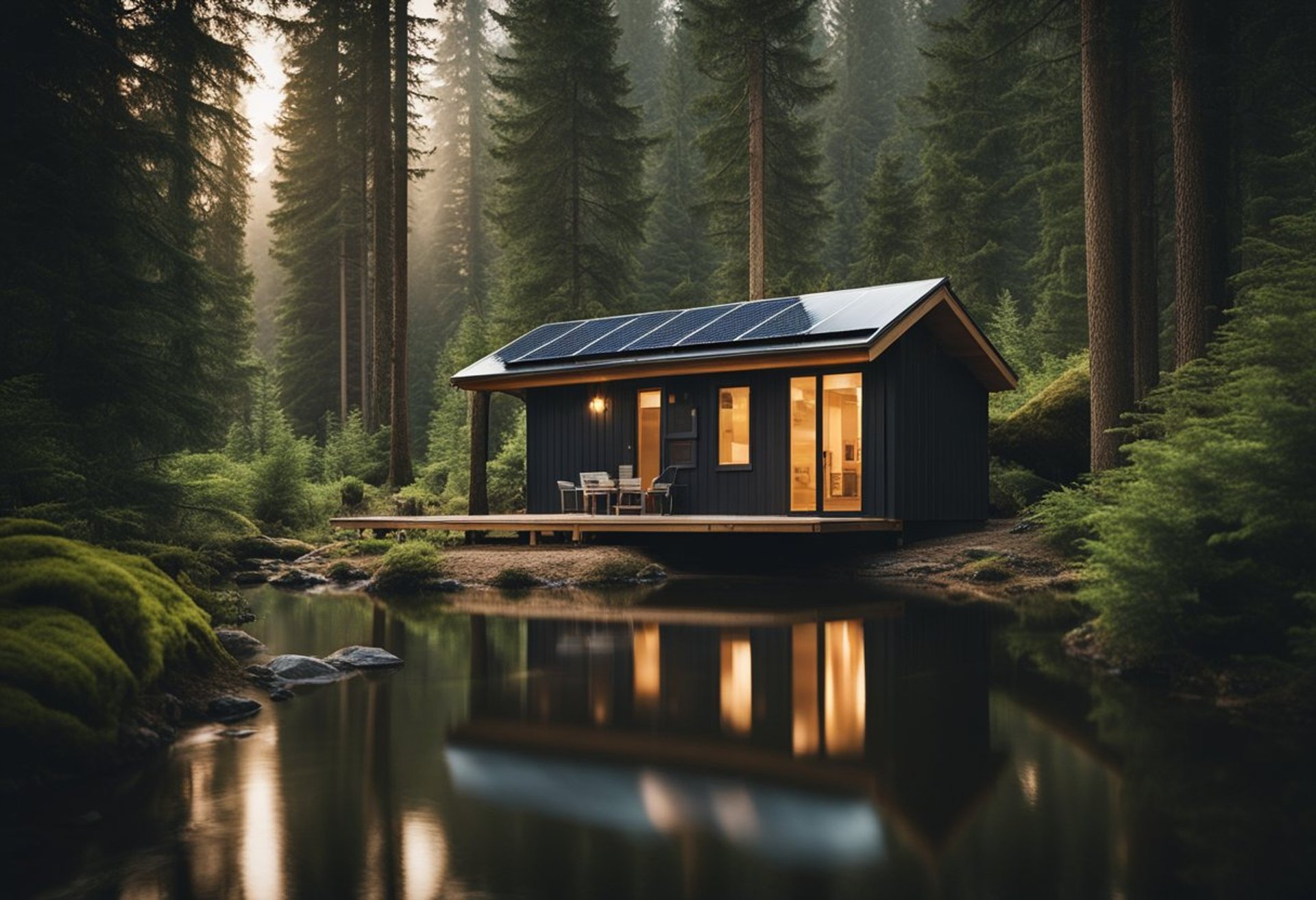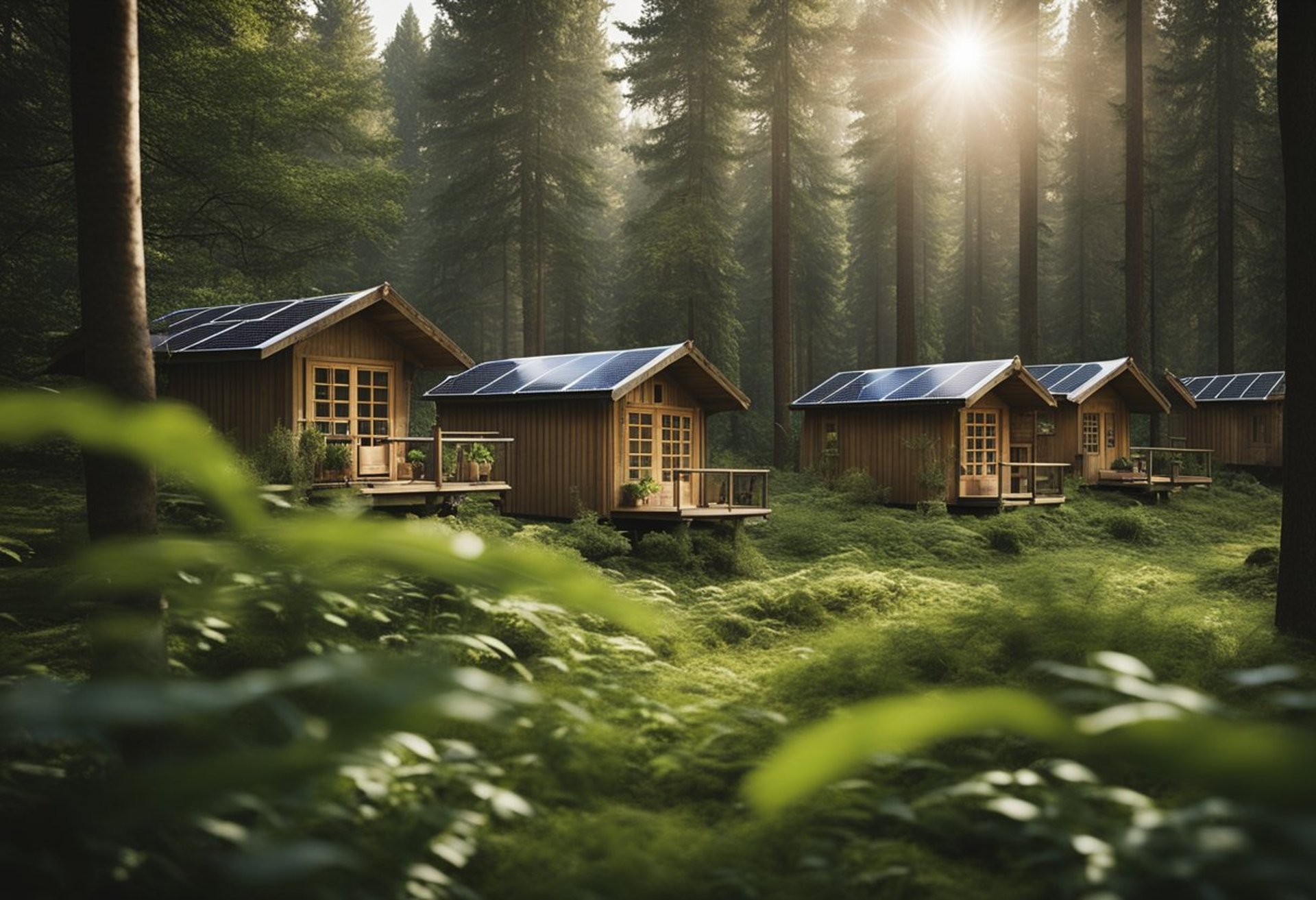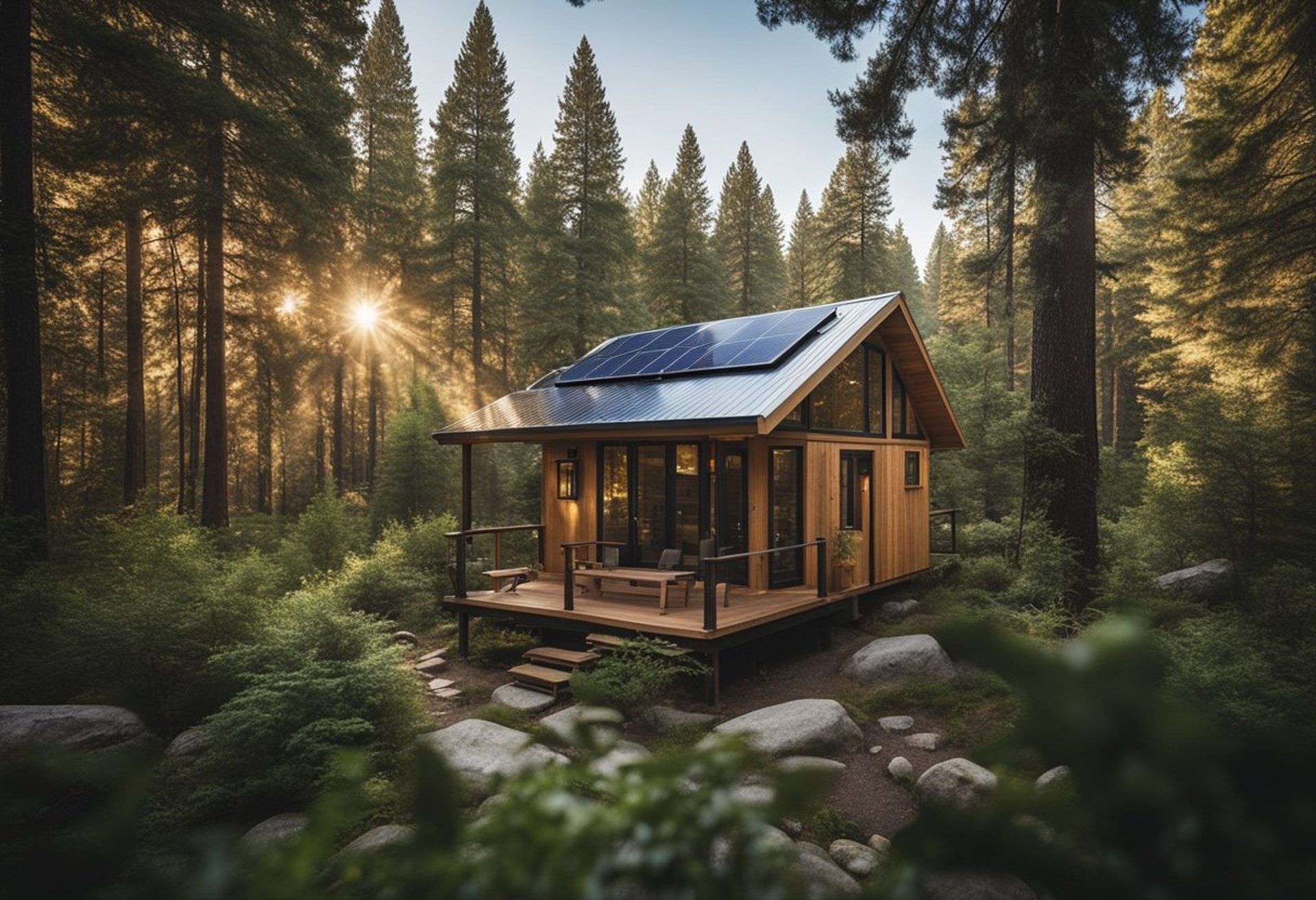Off the Grid Living Houses: Exploring the Appeal of Tiny Cabins
Off-the-grid living has become an attractive lifestyle choice for many seeking simplicity and sustainability. Tiny cabins designed for off-the-grid living offer a compact and efficient way to escape the pressures of modern life while staying connected to nature. These small structures provide the essential comforts needed for a self-sufficient life while minimizing environmental impact.
The concept of downsizing to a tiny cabin not only reduces living expenses but also encourages a more intentional way of living. Individuals interested in this lifestyle can explore various designs and building materials that enhance efficiency and sustainability. By incorporating renewable energy sources and efficient water systems, a tiny cabin can serve as a perfect model for those wishing to live independently.
As more people consider the shift to off-the-grid living, understanding local zoning laws and building regulations is critical. Learning from case studies can offer valuable insights into the practical aspects of constructing and maintaining these unique homes, making the transition smoother for aspiring off-the-grid dwellers.
Key Takeaways
Tiny cabins reduce living costs and environmental impact.
Sustainable materials enhance efficiency in off-the-grid homes.
Knowing local regulations is vital for successful off-the-grid living.
Concepts of Off-the-Grid Living
Off-the-grid living emphasizes independence from municipal services and promotes sustainable lifestyles. Key ideas include self-sufficiency through renewable resources and understanding the associated benefits and challenges.
Sustainability and Self-Sufficiency
Sustainability is a foundational concept in off-the-grid living. It involves utilizing resources that can be replenished, such as solar energy, wind, and water collection systems.
Self-sufficiency allows individuals to produce their own food through gardening and livestock. By growing vegetables, fruits, and herbs, they reduce reliance on commercial food sources.
Important systems include:
Solar Panels: Generate electricity for household needs.
Rainwater Harvesting: Collects and stores water for use.
Composting Toilets: Reduce waste and conserve water.
This lifestyle encourages a reduced ecological footprint and promotes a connection to nature.
Benefits and Challenges
Living off the grid offers distinct benefits. Individuals gain independence from utility companies and potentially lower living costs. This lifestyle often results in a simpler, less cluttered existence, promoting mental well-being.
However, challenges exist that can impact the quality of life. Access to modern conveniences may be limited. Maintenance of systems such as solar panels or water purification can require technical knowledge and consistent effort.
Key challenges include:
Initial Investment: Setting up off-grid systems can be costly.
Isolation: Limited access to community resources and support.
Weather Dependency: Reliance on climate conditions for energy and food production.
Understanding these aspects can help individuals make informed decisions about transitioning to this lifestyle.
Designing Tiny Cabins for Off-the-Grid Living
Creating effective designs for tiny cabins aimed at off-the-grid living requires thoughtful consideration of space, resources, and sustainability. Each aspect plays a crucial role in ensuring that these cabins remain functional and comfortable without reliance on external utilities.
Maximizing Space Efficiency
Space efficiency is paramount when designing tiny cabins. Clever layouts, such as open-concept designs, create a feeling of spaciousness. Multi-functional furniture can serve dual purposes, such as a dining table that converts into a workspace.
Key features include:
Lofted sleeping areas: Utilize vertical space for sleeping, freeing up ground area.
Built-in storage solutions: Incorporating shelves and under-bed storage minimizes clutter.
Expandable sections: Consider foldable walls or sliding partitions to adapt the cabin's space as needed.
Renewable Energy Integration
Off-the-grid living relies heavily on renewable energy sources. Solar panels are the most common choice for tiny cabins, providing power for lighting, appliances, and heating.
Important elements include:
Battery storage systems: These store excess energy for nighttime use or cloudy days.
Wind turbines: In suitable areas, they can complement solar energy for consistent power.
Energy-efficient appliances: When selecting devices, prioritize those with low energy consumption.
Water Collection and Waste Management
Water collection and waste management are essential for sustainable living in tiny cabins. Rainwater harvesting systems collect and filter water for domestic use.
Considerations should include:
Gutters and filtration systems: Essential for directing water into storage tanks.
Composting toilets: Minimize water usage and convert waste into valuable soil.
Greywater systems: These allow for the reuse of sink and shower water in gardens, reducing overall water consumption.
Each of these components contributes to creating a sustainable, efficient living space in tiny cabins designed for off-the-grid lifestyles.
Building Materials and Methods
Choosing the right materials and construction methods is crucial for off-the-grid living. Sustainable options contribute to energy efficiency and reduce the environmental impact of tiny cabins.
Eco-Friendly Materials
Eco-friendly materials are vital for constructing sustainable tiny cabins. Options include:
Reclaimed Wood: This reduces deforestation and minimizes waste. It adds character and insulation.
Straw Bales: An excellent insulator, straw bales are cost-effective and biodegradable. They provide high thermal performance.
Hempcrete: Made from hemp fibers and lime, hempcrete is lightweight, strong, and helps regulate indoor humidity.
Recycled Metal: Durable and often available from old buildings, recycled metal can be used for roofing and siding. It is resistant to pests and weather.
These materials not only promote sustainability but also lead to cost savings over time through reduced energy consumption.
Innovative Construction Techniques
Innovative construction techniques maximize space and efficiency in tiny cabins. Methods include:
Modular Design: This allows for prefabrication off-site, leading to faster assembly and enhanced quality control.
Passive Solar Design: Incorporating large south-facing windows can effectively harness solar energy, reducing heating costs.
Rainwater Harvesting Systems: These systems collect and store rainwater for use in various household functions, promoting water conservation.
Earthbag Construction: Using bags filled with local earth provides excellent insulation and uses natural materials, minimizing construction waste.
Implementing these techniques facilitates efficient building processes and promotes sustainability, making off-the-grid living more achievable.
Legal Considerations and Zoning Laws
Navigating legal considerations and zoning laws is crucial for those interested in off-the-grid living and tiny cabins. Knowing the regulations can help avoid costly mistakes and ensure compliance with local authorities.
Land Ownership and Building Permits
Land ownership directly influences what can be built on a property. Owners must verify that their land is zoned for residential use, especially for tiny homes or cabins. Different regions have varying requirements for building permits, which can include inspections and adherence to specific building codes.
For instance, a permit may be required to ensure the structure meets safety standards. Additionally, some areas may have restrictions on the size and type of dwelling. Non-compliance can result in fines or even demolition orders. Therefore, researching local zoning laws and permitting processes is essential prior to construction.
Impact on Local Infrastructure
Building an off-the-grid home can strain local infrastructure, especially in rural areas. Zoning laws may have specific provisions to address potential impacts, including sewage disposal and water use. For example, certain areas may require the installation of a septic system, while others might mandate connection to public utilities, if available.
Additionally, homeowners must consider access roads and emergency services when planning their cabin. They may face regulations that require adequate access for emergency vehicles. Ensuring compliance with these infrastructure-related concerns not only fosters good community relations but also supports sustainable off-the-grid living practices.
Case Studies and Real-world Examples
Tumbleweed Tiny House Company
This company offers a variety of models designed for off-grid living. Their homes range from 100 to 400 square feet. Many customers utilize solar panels and composting toilets, showcasing practical implementations of sustainable living.
Maine's Simple House
Constructed by a couple, this tiny cabin utilizes reclaimed materials. They successfully operate entirely off the grid using wind turbines and solar energy. The home features a wood stove for heating and an efficient rainwater catchment system.
Sustainable Tiny Homes in California
A community in California focuses on sustainable living. Each tiny home is equipped with energy-efficient appliances and rainwater harvesting systems. Residents share resources, promoting a cooperative lifestyle, which enhances their off-grid experience.
The Little House on the Prairie
Inspired by the famous series, this tiny home emphasizes minimalism. It operates on solar power and includes a garden for food sustainability. Owners highlight the simplicity and freedom that off-grid living provides.
Floating Tiny Homes by Lumen
These innovative homes are designed to float on water. They use solar panels and water filtration systems for independence from traditional utilities. This approach combines off-grid living with a unique lifestyle, appealing to adventurous individuals.









